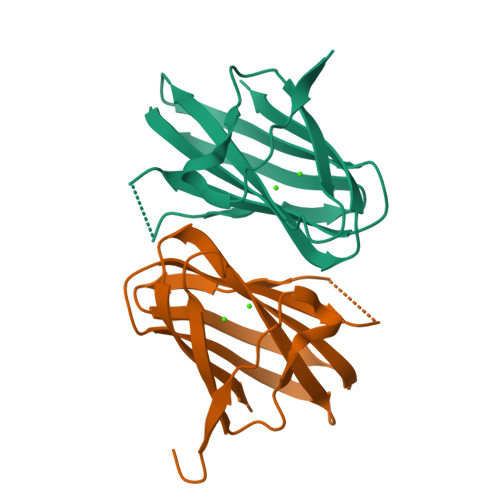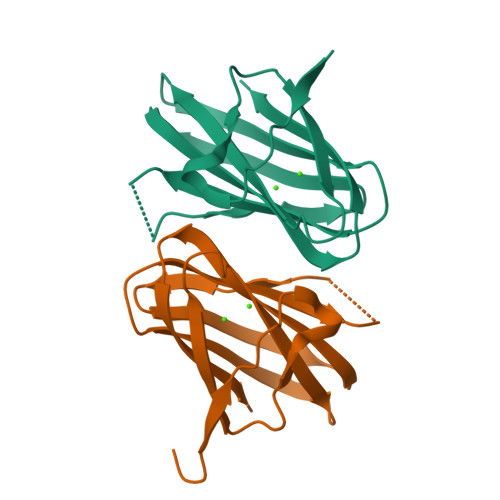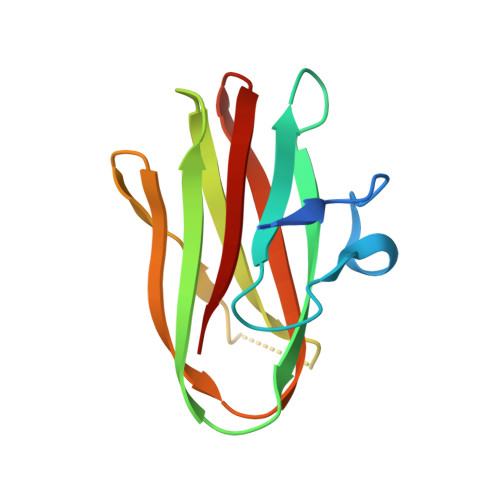A Bacterial Collagen-Binding Domain with Novel Calcium-Binding Motif Controls Domain Orientation
Wilson, J.J., Matsushita, O., Okabe, A., Sakon, J.(2003) EMBO J 22: 1743-1752
- PubMed: 12682007
- DOI: https://doi.org/10.1093/emboj/cdg172
- Primary Citation of Related Structures:
1NQD, 1NQJ - PubMed Abstract:
The crystal structure of a collagen-binding domain (CBD) with an N-terminal domain linker from Clostridium histolyticum class I collagenase was determined at 1.00 A resolution in the absence of calcium (1NQJ) and at 1.65 A resolution in the presence of calcium (1NQD). The mature enzyme is composed of four domains: a metalloprotease domain, a spacing domain and two CBDs. A 12-residue-long linker is found at the N-terminus of each CBD. In the absence of calcium, the CBD reveals a beta-sheet sandwich fold with the linker adopting an alpha-helix. The addition of calcium unwinds the linker and anchors it to the distal side of the sandwich as a new beta-strand. The conformational change of the linker upon calcium binding is confirmed by changes in the Stokes and hydrodynamic radii as measured by size exclusion chromatography and by dynamic light scattering with and without calcium. Furthermore, extensive mutagenesis of conserved surface residues and collagen-binding studies allow us to identify the collagen-binding surface of the protein and propose likely collagen-protein binding models.
Organizational Affiliation:
Department of Chemistry and Biochemistry, University of Arkansas, Fayetteville, AR 72701, USA.



















